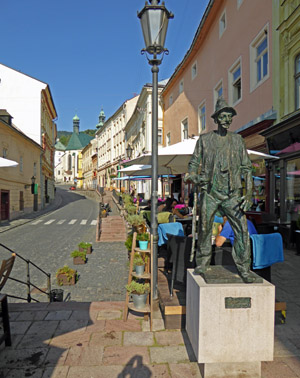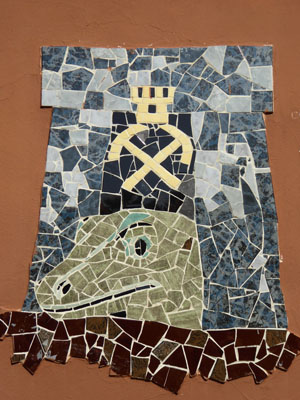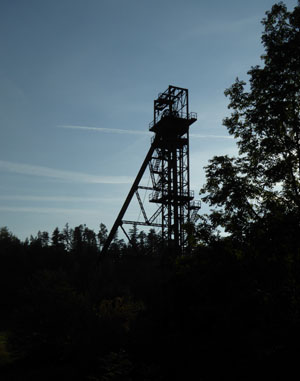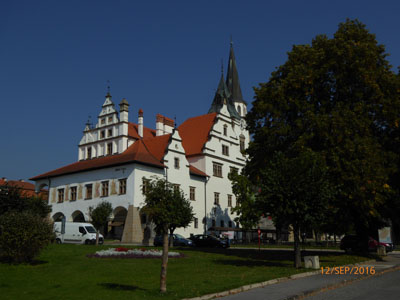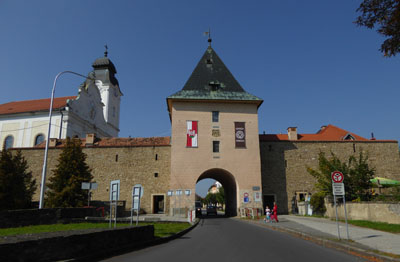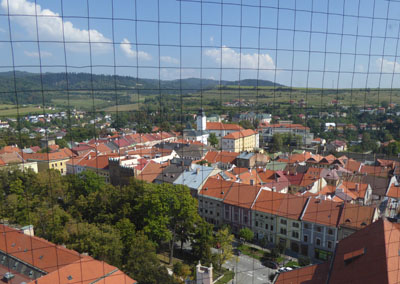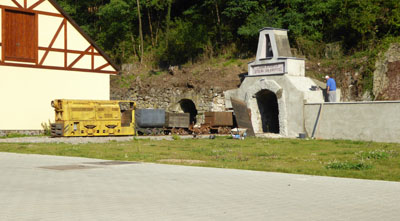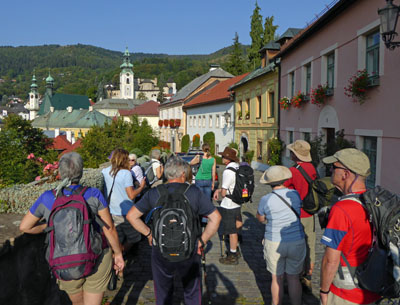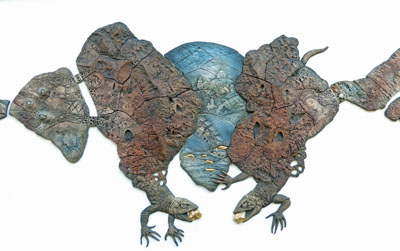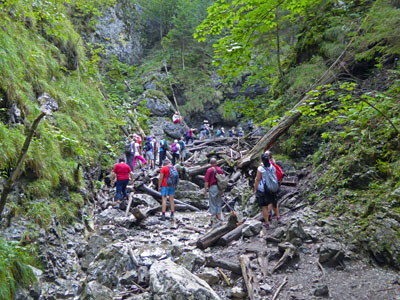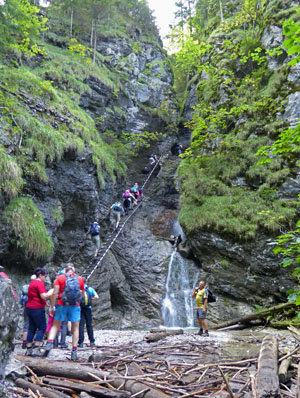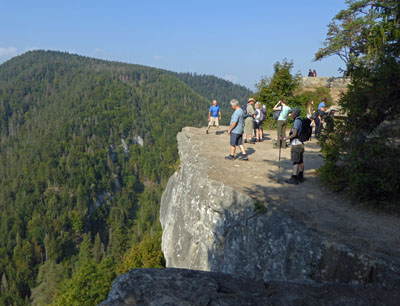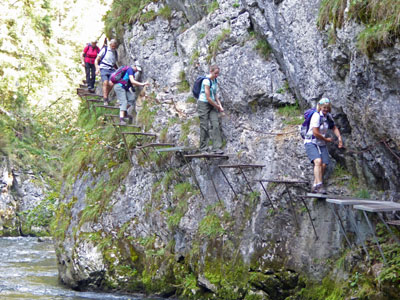| Going out a few days in advance of the group gave me the
chance to explore the first tour location, Banská Stiavnica - where the
group only spend one night, more extensively. And what a discovery! Not
only is the town in the middle of an eroded multi-facetted volcano (OK,
16 - 6 million years old...), but it is riddled with mine workings which
must make the ground under the town resemble Swiss cheese. Just beside
the hotel is the entrance to an adit that passes right under the town
and served as a drainage channel to the workings. There is even a shaft
(fenced off) at the side of a central square in the town.
I arrived as the main annual town festival, the Salamander, was packing up - just a few stalls remained, and I saw only one person dressed up - apparently the previous night was the climax, with students dressed up in old miners' clothes. A giant wooden Salamander (symbol of the 'ancient origin' of the miners) is also paraded around. |
|
|
|
|
Not surprisingly the area is a Geo Park, and on Sunday
afternoon I followed one of the signed trails. Unfortunately the trail
is in need of renovation as some of the panels were missing, and
the vegetation is beginning to obscure others. Nevertheless with the
help of a booklet which contained information from the panels I was able
to fill in the gaps - the panels had English translations, but the
booklet had German translations - of what seemed to me to be
degree-level information about the volcanic geology and subsequent
injection of mineral ores i.e. I could only understand half of it.
Almost.
The other delight of the town, apart from the variety of fine buildings, is the range of interesting coffee shops, bars and restaurants. |
|
|
|
